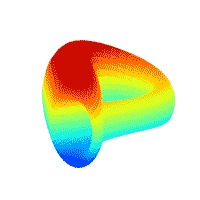
Coin-related
Price calculator
Price history
Price prediction
Technical analysis
Coin buying guide
Crypto category
Profit calculator

Leonidasbilic priceLIO
Key data of Leonidasbilic
Price of Leonidasbilic today
What is the highest price of LIO?
What is the lowest price of LIO?
Leonidasbilic price prediction
What will the price of LIO be in 2026?
What will the price of LIO be in 2031?
Leonidasbilic holdings by concentration
Leonidasbilic addresses by time held

Leonidasbilic ratings
About Leonidasbilic (LIO)
The Historical Significance and Key Features of Cryptocurrencies
Cryptocurrencies emerged from the shadows of the 2008 global financial crisis, with Bitcoin's creation considered an innovative response to the challenges of traditional financial systems. The introduction of Bitcoin became the genesis of what we now call cryptocurrencies, giving birth to an alternative form of finance based on digital technology. Now let's delve into the historical significance and critical features of cryptocurrencies.
Historical Significance of Cryptocurrencies
Cryptocurrencies established a paradigm shift in financial systems due to their underlying blockchain">blockchain technology. They were developed as a counter-response to centralized banking and economic systems that seemed to exacerbate economic instability. Satoshi Nakamoto, the elusive individual or group behind Bitcoin, designed the digital currency as a peer-to-peer electronic cash system devoid of central authority control.
Cryptocurrencies and their decentralization concept promote financial democracy, granting people control over their fund transfer, transparent transaction monitoring, and protection against fraud. The inception of cryptocurrencies contributed to the birth of a new asset class that has appealed to institutional investors, corporations, and the general public alike.
Key Features of Cryptocurrencies
Decentralization:
One of the key features of cryptocurrencies is their decentralized nature. This means that there is no central authority like a government or a central bank, which controls or regulates their operation. They operate on distributed ledger technology, predominantly blockchain, which spreads control and security across a network of computers (nodes).
Privacy and Security:
While every cryptocurrency transaction is publicly documented on the blockchain, sensitive information like user identities are not disclosed. This feature ensures user identities are safeguarded while maintaining transaction transparency. The cryptographic security feature of cryptocurrencies also makes transactions highly secure and tamper-proof.
Global Usability:
Cryptocurrencies can be sent and received across geopolitical borders without limitation. They offer a universal platform that supports seamless global transactions, making them an efficient remittance method and promoting financial inclusion in developing regions.
Programmable Money:
Cryptocurrencies are programmable – a feature that allows users to set conditions for sending or receiving payments. For instance, a payment could be dictated to go through at a specific time or after a particular condition is satisfied. The programmable nature also enables smart contracts – self-executing contracts with the agreement directly written into a code.
Portability and Control:
Digital currencies are easy to carry and control unlike physical money. With just a smartphone or a digital wallet, one can manage their investment conveniently.
In conclusion, cryptocurrency provides several amazing features that counteract the limitations of traditional financial systems. Its historical significance lies in its innovative response to stabilize the global economy. The key features like decentralization, security, privacy, global accessibility, programmability, and user control make cryptocurrencies unique and promising for a future driven by digital finance.
How to buy Leonidasbilic(LIO)

Create Your Free Bitget Account

Verify Your Account

Buy Leonidasbilic (LIO)
Join LIO copy trading by following elite traders.
Buy more
FAQ
What is the current price of Leonidasbilic?
What is the 24 hour trading volume of Leonidasbilic?
What is the all-time high of Leonidasbilic?
Can I buy Leonidasbilic on Bitget?
Can I get a steady income from investing in Leonidasbilic?
Where can I buy Leonidasbilic with the lowest fee?
Where can I buy Leonidasbilic (LIO)?
Video section — quick verification, quick trading

LIO resources
Related assets


































